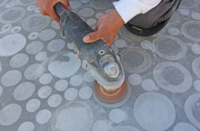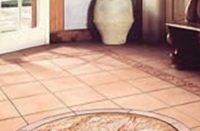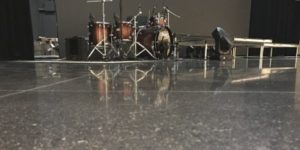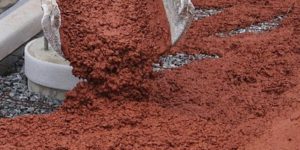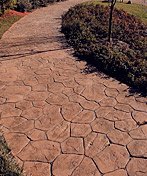 Some mistakenly view the decorative concrete world as 100 percent committed to overlays, stain and polished concrete, but counting out concrete stamping is a mistake. Stamped concrete is the cornerstone of decorative concrete, and my belief is that this will not change anytime soon.
Some mistakenly view the decorative concrete world as 100 percent committed to overlays, stain and polished concrete, but counting out concrete stamping is a mistake. Stamped concrete is the cornerstone of decorative concrete, and my belief is that this will not change anytime soon.
What will change is the perceived value of stamped concrete, at least in the eyes of tomorrow’s buyer. My question to you is — are you prepared for this new era of stamped concrete?
Let’s agree on the facts before journeying on. Today’s decorative concrete buyer is more money-conscious now than ever before. This causes customers to want to carefully watch improvement budgets yet still end the day with something durable and attractive, such as colored and stamped concrete. At the same time, your cost to produce stamped concrete has risen too, leading some decorative contractors to look for a solution. Let’s break down the facts once again:
- Buyers are less willing to spend, at least compared to a few years back.
- Contractors’ cost to install stamped concrete is as high as ever before.
Today, I want to provide a few simple decorative adjustments that will allow you to sell and install stamped concrete for less money, thereby offering a customer something nice for less. Most customers appreciate a contractor’s commitment to saving money, so don’t be afraid to promote your money-saving efforts.
Integral instead of hardener
The total stamped concrete package consists of overhead, labor, concrete, coloring and sealer. (Stamping tools would not be part of an itemized budget for one job.) Concrete material costs are nearly impossible to noticeably adjust, so for this reason I want to focus on options worth the effort — labor, overhead, coloring and sealing.
Here is a breakdown of typical stamped concrete costs:
- Business overhead and profit.
- Labor to excavate, form, place, stamp and seal.
- Concrete, rebar and base materials.
- Coloring materials.
- Sealer materials.
It all starts with the color. I’m a dry-shake color hardener guy myself, but I realize there are times when it makes perfect sense to “batch” color (add color to the ready-mix). By example, using a light dose of integral coloring provides two cost-saving objectives. These objectives provide benefits to the customer that must be clearly explained early in the sales presentation.
Here are the benefits of an integral coloring system using light colors.
- Light colors attract (and absorb) less heat.
- Light colors show less water deposits.
- Light colors create a perfect canvas for a darker antiquing color.
- Light colors require fewer pounds of color, therefore saving money.
- Light colors offer many shades of earth tones.
- Integral colors are present throughout the thickness of the concrete.
However, by now we all realize the goal here is to provide a coloring process that saves the customer money, and my opinion is that, as products alone, integral colorants provide only a slight color savings compared to shake-on hardeners that color the concrete’s surface. The true savings offered by integral colorants come with your ability to stamp more concrete surface with fewer crew members.
Using integral coloring is the stamping industry’s version of labor efficiency. Here is how and why.
Fewer steps: The art of stamping concrete involves utilizing a skilled team to complete sequential steps in a limited amount of time. Using integral coloring eliminates a major step — broadcasting color (not to mention the learning curve that comes with throwing color hardeners). Eliminating this one step allows for successful stamping with one less skilled artisan at least. This translates to a savings of between 30 cents and 50 cents per square foot on an average stamped project
Less overhead: It is expensive to hire, train, and keep skilled decorative concrete employees. I know this because my firm has hired several dozen over the years. Fewer employees equals less money spent when stamping concrete. I will not estimate a square-foot savings amount, as no two companies share the same overhead burden.
Saving money with sealer
Sealing stamped concrete is a necessary evil of our industry. You can do everything 100 percent correctly and still wind up with a callback. What’s more, the price of materials to seal concrete will never be any lower than it is today. But this is not to say an opportunity to save money is nonexistent.
As you flip through an issue of Concrete Decor magazine, my guess is you’ll see that most featured stamped projects have included a glossy sealer to enhance color and protect the concrete’s surface. The cost to apply this type of sealer is about 75 cents to $1 per square foot.
Another option does exist for those who are a little more money-conscious. Offer your customers the option of using a penetrating sealer that still protects the concrete’s surface from most stains but costs significantly less. No, penetrating sealers don’t enhance less-vibrant colors, but remember, some customers won’t mind stamped concrete with a natural look.
Not to mention that with glossy topical sealers, there’s the hassle of expensive resealing every year or three. Penetrating sealers cut sealing costs by half in most cases.
My experience is that integral color combined with the use of a penetrating sealer saves at minimum $1 per square foot on an average stamp project. This savings could be just enough to keep your business in the profit zone.
